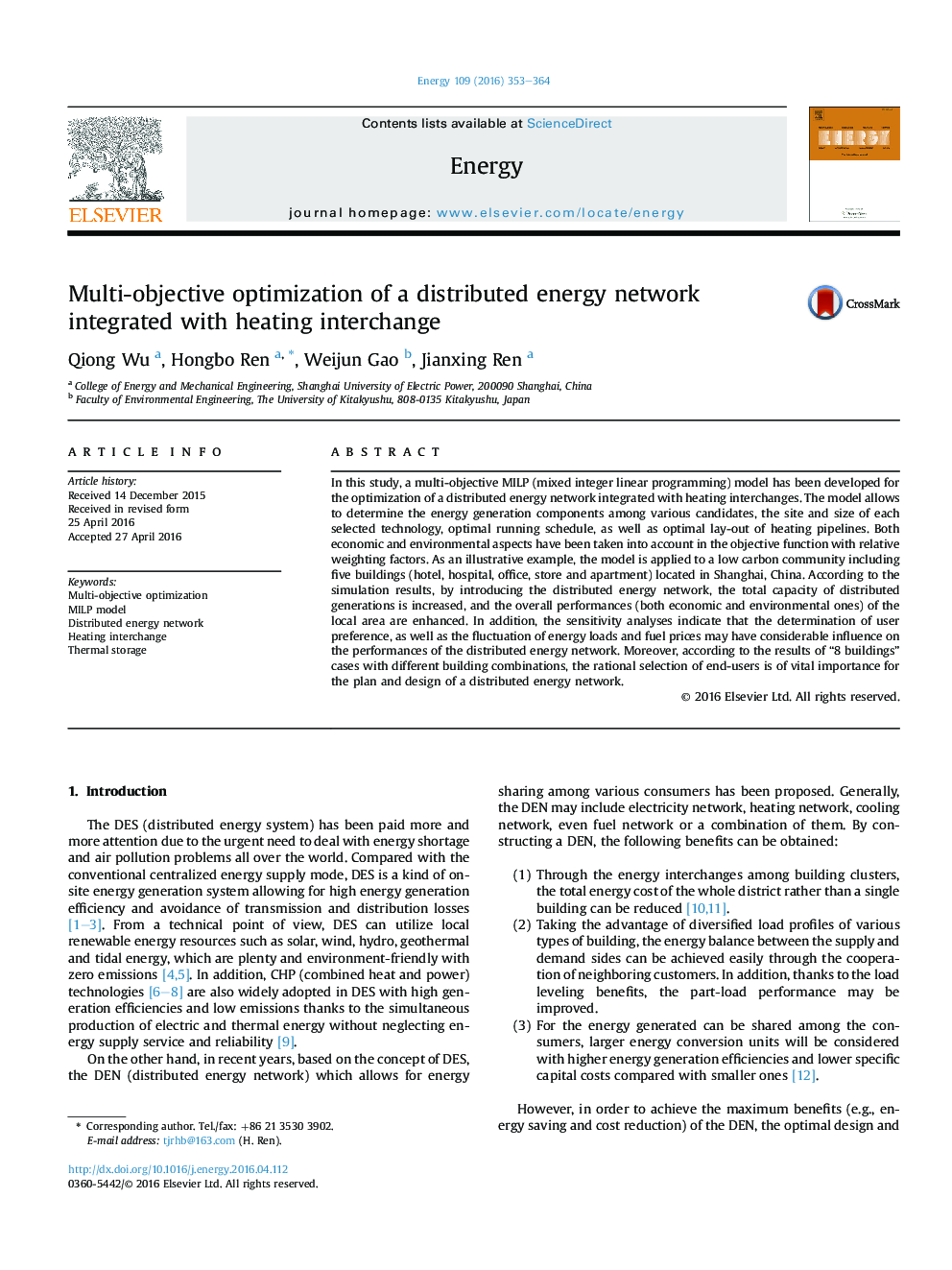| کد مقاله | کد نشریه | سال انتشار | مقاله انگلیسی | نسخه تمام متن |
|---|---|---|---|---|
| 8073480 | 1521439 | 2016 | 12 صفحه PDF | دانلود رایگان |
عنوان انگلیسی مقاله ISI
Multi-objective optimization of a distributed energy network integrated with heating interchange
ترجمه فارسی عنوان
بهینه سازی چند منظوره یک شبکه انرژی توزیع شده با مبدل حرارت
دانلود مقاله + سفارش ترجمه
دانلود مقاله ISI انگلیسی
رایگان برای ایرانیان
ترجمه چکیده
در این مطالعه، مدل چند هدفه (برنامه ریزی خطی عدد صحیح مخلوط) برای بهینه سازی یک شبکه انرژی توزیع شده با مبدل های گرمایشی طراحی شده است. این مدل اجازه می دهد تا اجزای تولید انرژی را در بین نامزدهای مختلف، سایت و اندازه هر تکنولوژی انتخاب شده، برنامه ریزی مطلوب و همچنین صرفه جویی در خطوط لوله گرما، تعیین کند. هر دو جنبه اقتصادی و زیست محیطی در عملکرد هدف با عوامل وزن نسبی در نظر گرفته شده است. به عنوان مثال مثال، این مدل به یک جامعه کم کربن شامل پنج ساختمان (هتل، بیمارستان، دفتر، فروشگاه و آپارتمان) واقع در شانگهای، چین اعمال می شود. با توجه به نتایج شبیه سازی، با معرفی شبکه های انرژی توزیع شده، ظرفیت کل نسل های توزیع شده افزایش می یابد و عملکرد کلی (هر دو از لحاظ اقتصادی و محیط زیست) منطقه افزایش می یابد. علاوه بر این، تجزیه و تحلیل حساسیت نشان می دهد که تعیین اولویت کاربر، و همچنین نوسان بارهای انرژی و قیمت سوخت ممکن است تأثیر قابل توجهی بر عملکرد شبکه توزیع شده انرژی داشته باشد. علاوه بر این، با توجه به نتایج یک ساختمان 8 ؟؟ موارد با ترکیب ساختمان های مختلف، انتخاب منطقی از کاربران نهایی اهمیت حیاتی برای طرح و طراحی یک شبکه انرژی توزیع شده است.
موضوعات مرتبط
مهندسی و علوم پایه
مهندسی انرژی
انرژی (عمومی)
چکیده انگلیسی
In this study, a multi-objective MILP (mixed integer linear programming) model has been developed for the optimization of a distributed energy network integrated with heating interchanges. The model allows to determine the energy generation components among various candidates, the site and size of each selected technology, optimal running schedule, as well as optimal lay-out of heating pipelines. Both economic and environmental aspects have been taken into account in the objective function with relative weighting factors. As an illustrative example, the model is applied to a low carbon community including five buildings (hotel, hospital, office, store and apartment) located in Shanghai, China. According to the simulation results, by introducing the distributed energy network, the total capacity of distributed generations is increased, and the overall performances (both economic and environmental ones) of the local area are enhanced. In addition, the sensitivity analyses indicate that the determination of user preference, as well as the fluctuation of energy loads and fuel prices may have considerable influence on the performances of the distributed energy network. Moreover, according to the results of “8 buildings” cases with different building combinations, the rational selection of end-users is of vital importance for the plan and design of a distributed energy network.
ناشر
Database: Elsevier - ScienceDirect (ساینس دایرکت)
Journal: Energy - Volume 109, 15 August 2016, Pages 353-364
Journal: Energy - Volume 109, 15 August 2016, Pages 353-364
نویسندگان
Qiong Wu, Hongbo Ren, Weijun Gao, Jianxing Ren,
